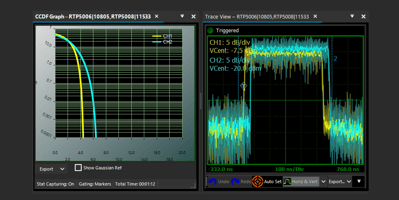Error vector magnitude (EVM) is an important metric for analyzing and optimizing digital...
Measuring a Signal's Peak and Average Power? Review These 4 Important Definitions
Peak and average power measurements offer valuable insight on signal behavior and system performance. What are the differences between measuring a signal’s envelope power, peak envelope power, average power, and pulse average power?
Learn the answers in our "RF & Microwave FAQ: Peak and Average Power Measurements" playlist. Each video provides a concise yet informative definition of these four essential power measurements.
RF and microwave frequently asked questions featured in the playlist include:
What is envelope power?
Envelope power is a signal’s amplitude variations from modulation or distortion as a function of time averaged over one or a few cycles of the RF carrier signal.
What is peak envelope power?
Peak envelope power is the maximum point or peak amplitude of a signal’s envelope power.
What is average power?
Average power defines the average power level over the pulse repetition interval, which includes the signal burst and the interval before the next pulse.
What is pulse average power?
Pulse average power is the average power level of the signal burst over the pulse width.



